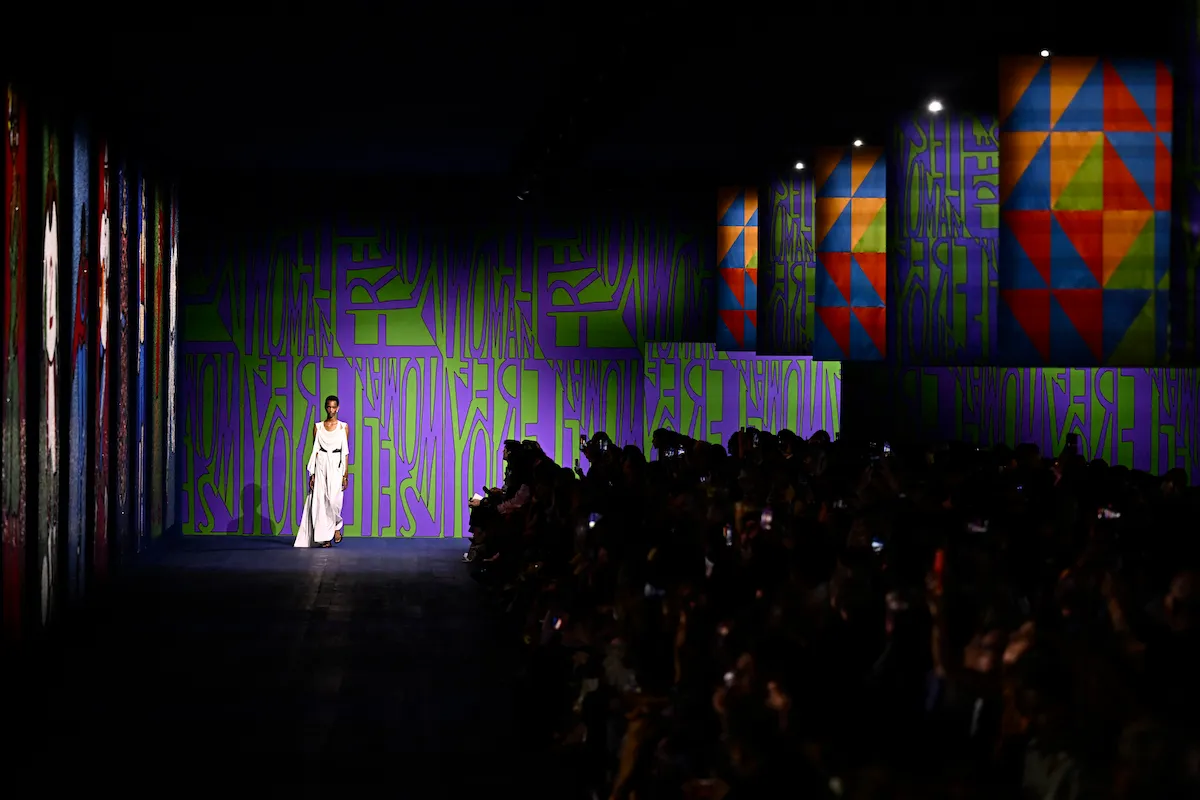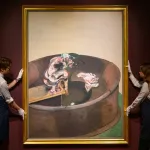
Dior creative director Maria Grazia Chiuri has made a point of including women artists in her runway shows, shining a light on works by Judy Chicago, Joana Vasconcelos, Isabella Ducrot, and others while premiering her newest designs. The latest artist to receive such a treatment is Faith Ringgold, the beloved painter who died earlier this year at 93.
Many of Ringgold』s paintings center African American women, whose subjectivities she explored with precision and passion. In her painted quilts of the 1980s and 』90s, she enlisted craft techniques to tell the stories of Black girls and women who had historically been sidelined from the Western canon. And in her bitter, vibrant paintings of the 』60s and 』70s, she dealt with intersections between racism and misogyny.
Dior』s autumn/winter 2024–25 haute couture show took place on Monday inside a structure covered in reproductions of Woman Freedom Now (1971), a Ringgold piece that repeats the titular phrase in shades of red, green, and black, the colors of the Pan-African flag. Images of that work appeared on posters at demonstrations around the time the work was made.
Inside, there were gigantic reproductions of Woman Free Yourself (1971), Ringgold』s print featuring those words in clashing green and purple tones. Those reproductions appeared both on a giant wall and on hanging banners.
Also hanging from the ceiling were images of works from 「Windows of the Wedding」 (1974), Ringgold』s first abstract series, in which long vertical paints of diamond-shape forms are book-ended by swatches of fabric. The prismatic patterns were inspired by Kuba designs that came out of Central Africa. (Artisans with India』s Chanakya School of Craft, whom Chiuri has regularly enlisted as her collaborators, also made new works for the show in response to these Ringgold pieces.)
Dior』s statement about the show did not refer to Ringgold works, instead focusing on the clothes, which used the Paris Olympics as a jumping-off point. In response to the jerseys worn by athletes, Chiuri designed dresses that made use of metal mesh.
The point, the house said in a statement, was to help continue the project of 「rethinking the allure, the elegance of a woman at once delicate and strong. A woman who performs just as well as a man.」
The late writer Amiri Baraka said in 1985 that Ringgold』s works similar to Woman Free Yourself 「should have the status of modern classics,」 and it now appears they do. But if Ringgold』s work once signified a form of protest, it meant something much different at today』s Dior runway show, where they seemed mainly to provide a feminist splash of color and little more.
